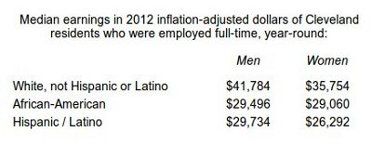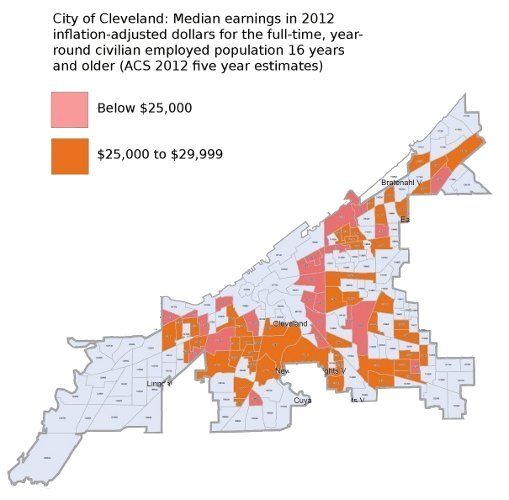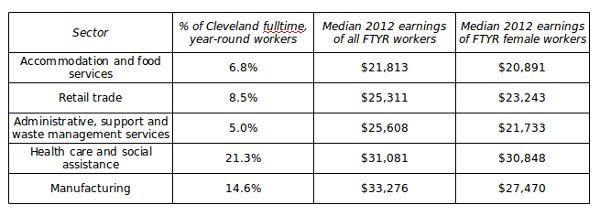Note well: The median pay of a fully employed African-American or Hispanic Cleveland resident qualifies him or her -- if he or she is the only earner in a family of four or more -- for Federal food assistance and Medicaid.
It's easy to forget (especially when we're so seldom reminded) that King's last days were spent in Memphis supporting a strike by low-income African-American sanitation workers demanding union recognition:
... [T]he sanitation men had been asking the city for recognition of their union and for a resolution of their many grievances since 1963. These workers lived below the poverty level while working fulltime jobs, and 40 percent of them qualified for welfare to supplement their meager salaries. [My emphasis]Not unlike some of our neighbors in 2014.


